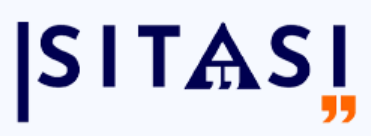TALENT MANAGEMENT STRATEGY FOR PERFORMANCE MANAGEMENT PROCESS ABOUT INCREASED PERFORMANCE AND EMPLOYEE RETENTION AT PT KNAUF PLASTERBOARD INDONESIA PLANT CILEGON
DOI:
https://doi.org/10.53067/ije3.v4i3.365Keywords:
Talent management, recruitment, employee performance, retention, HR strategyAbstract
This study aims to analyze and evaluate talent management strategies in the recruitment process and their impact on improving employee performance and retention at PT Knauf Plasterboard Indonesia Plant Cilegon. Companies must implement a cohesive and effective recruitment strategy integrated with thorough talent management practices to address the challenges posed by business competition and the demand for high-quality human resources. This study employs a qualitative research method, utilizing data collection techniques such as in-depth interviews, observations, and document analysis. The study results indicate that implementing talent management strategies that identify competency needs, potential-based selection, and structured career development significantly improve individual and team performance. Furthermore, the strategy positively influences employee retention rates by enhancing engagement and satisfaction through well-defined career progression opportunities. This research recommends that organizations persist in advancing data-driven and technology-oriented methods within their talent management processes to navigate the increasingly intricate dynamics of the labour market effectively.
Downloads
References
Armstrong, M. (2009). Armstrong's handbook of human resource management practice (11th ed.). Kogan Page.
Dessler, G. (2017). Human resource management (15th ed.). Pearson Education Limited.
Febrian, W. D., Ansori, K., Roza, N., Syafri, M., Susanto, S., & Lubis, F. M. (2024). Strategi manajemen talent untuk peningkatan kinerja dan retensi karyawan. Jurnal Review Pendidikan dan Pengajaran, 7(2), 4069–4077. https://doi.org/10.31004/jrpp.v7i2.26930
Lintang, M. I. G., Lengkong, V. P. K., & Walangitan, M. D. B. (2024). Pengaruh talent management dan organizational commitment terhadap retensi karyawan pada PT. Bumi Karsa Wilayah Tondano. Jurnal EMBA: Jurnal Riset Ekonomi, Manajemen, Bisnis dan Akuntansi, 12(1), 123–134. https://doi.org/10.35794/emba.v12i01.53474
Mujibi, A., & Azmy, A. (2024). Talent management sebagai penunjang kinerja perusahaan. Jurnal Perspektif Manajerial dan Kewirausahaan (JPMK), 4(2), 117–127. https://doi.org/10.59832/jpmk.v4i2.267
Phillips, J. J., & Edwards, L. (2009). Managing talent retention: An ROI approach. Pfeiffer.
Ramadhani, F. E., Harsono, H., & Sunardi, S. (2023). Talent management dan knowledge management terhadap kinerja karyawan dengan employee retention sebagai variabel moderator. Jurnal Bisnis dan Manajemen, 7(2). https://jurnal.unmer.ac.id/index.php/jbm/article/view/4648
Robbins, S. P., & Judge, T. A. (2015). Organizational behaviour (16th ed.). Pearson Education.
Surya, P. A., Sriati, S., & Nadjib, A. (2024). Pengaruh manajemen talenta terhadap kinerja pegawai dengan retensi sebagai variabel intervening di Direktorat Jenderal Perbendaharaan. Jurnal Manajemen Perbendaharaan, 5(1), 78–100. https://doi.org/10.33105/jmp.v5i1.485
Widiyanto, E., & Zurnali, C. (2023). Pengaruh manajemen talenta, kompensasi, dan gaya kepemimpinan terhadap kinerja karyawan. Journal of Economics and Business UBS, 12(6), 78–89. https://doi.org/10.52644/joeb.v12i6.1379
Yosepha, S. Y., & Baroto, F. W. (2023). Peran strategi manajemen talenta dalam meningkatkan retensi karyawan milenial: Kajian literatur kualitatif. HUMANIS (Humanities, Management and Science Proceedings), 3(1), 45–52. https://openjournal.unpam.ac.id/index.php/SNH/article/view/43891
Zaky, M. (2023). Strategi pengelolaan talenta untuk meningkatkan daya saing organisasi di era industri 4.0. Komitmen: Jurnal Ilmiah Manajemen, 1(1), 15–25. https://doi.org/10.15575/jim.v1i1.25247
Downloads
Published
How to Cite
Issue
Section
License
Copyright (c) 2024 Aan Destian, Eva Sofianty, Raditya Wibowo,Riski Wulandari, Khaeruman

This work is licensed under a Creative Commons Attribution-NonCommercial-ShareAlike 4.0 International License.
Copyright @2021. This is an open-access article distributed under the terms of the Creative Commons Attribution-NonCommercial-ShareAlike 4.0 International License (http://creativecommons.org/licenses/by-nc-sa/4.0/) which permits unrestricted non-commercial used, distribution and reproduction in any medium
















